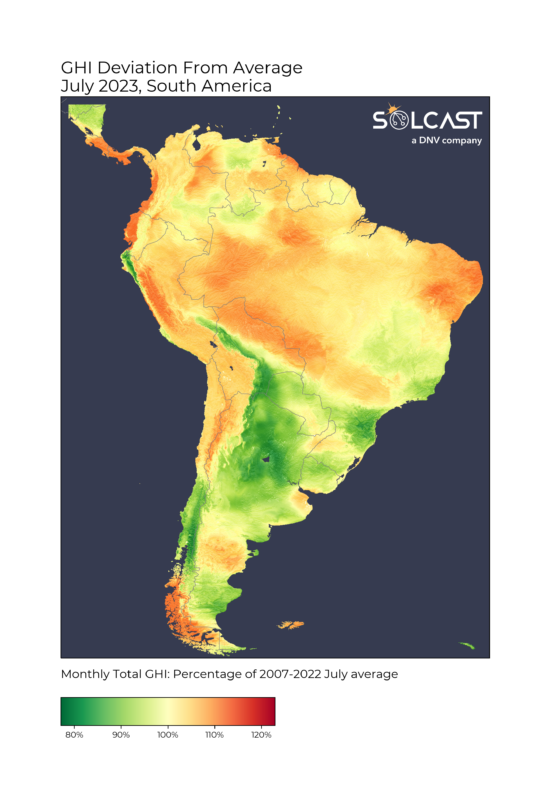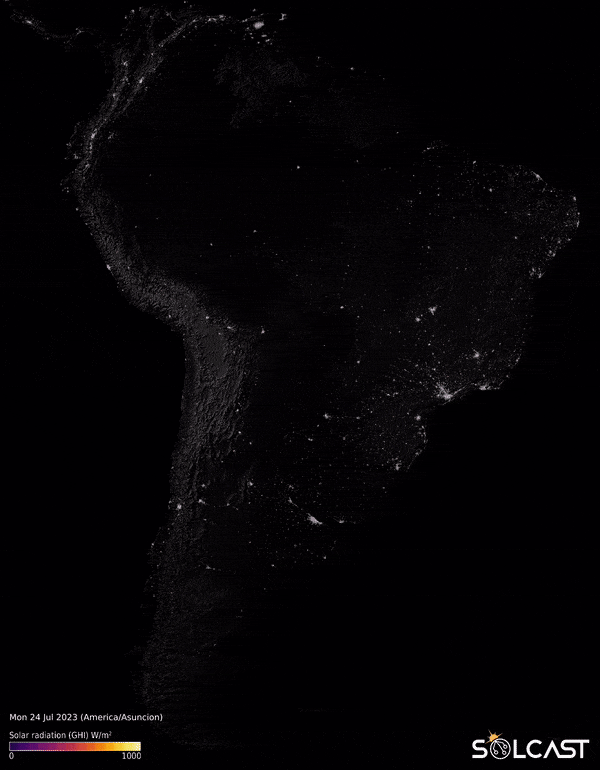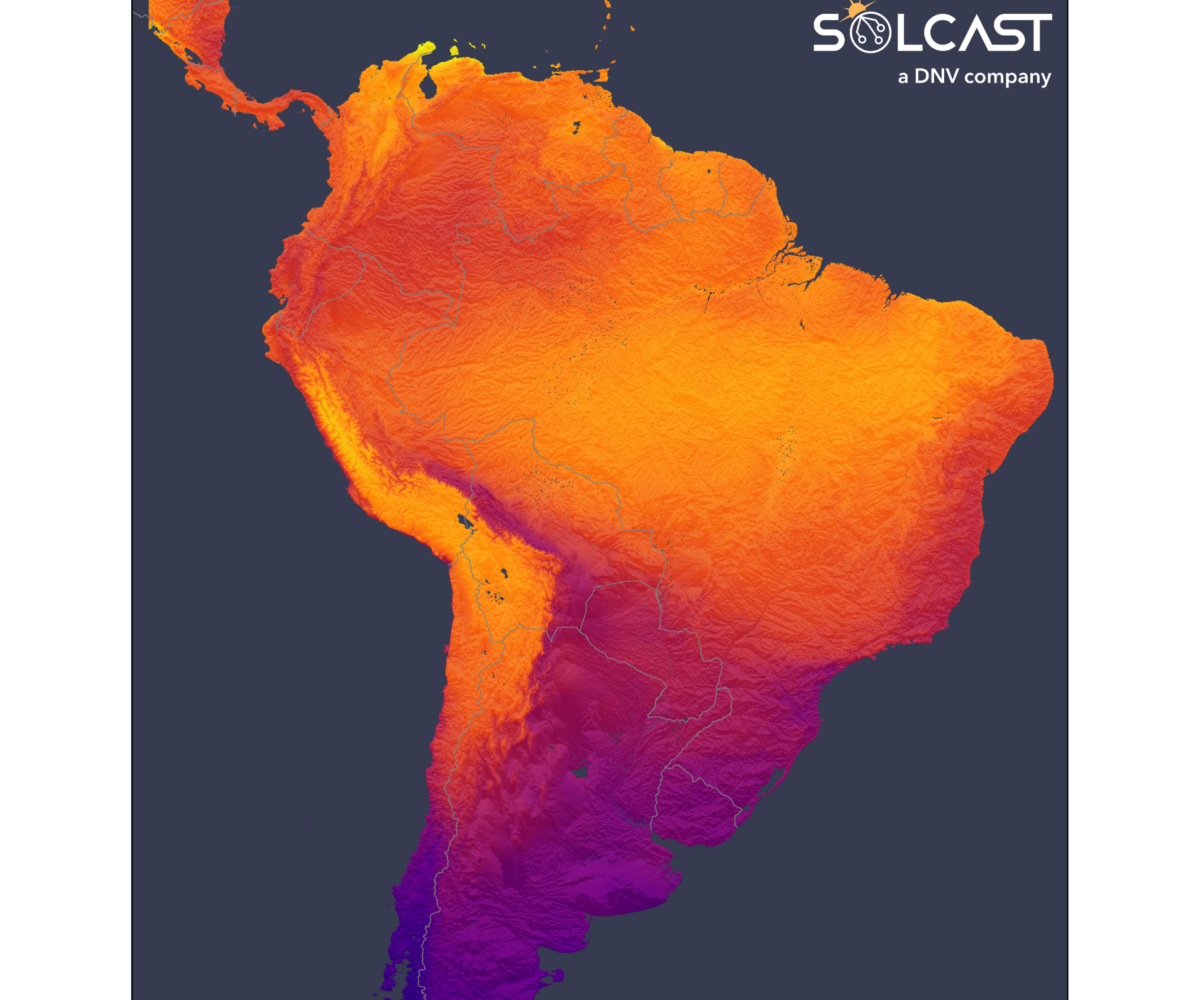July was a month marked by meteorological contrasts, with global record-breaking temperatures and varying irradiance levels that had significant impacts, particularly in South America. The record heat for July was felt worldwide, with South America experiencing temperatures up to 15 C above winter averages. This contributed to the hottest month ever recorded globally, with the most significant impact seen in South America. Irradiance was also up across most of the continent, according to data from the Solcast API

While most of South America saw higher than normal irradiances over the 2007 to 2022 climatology, a persistent leeward cloud east of the Andes led to below-average irradiance in specific regions. Northern Argentina was most affected by this unusual cloud pattern and saw as little as 80% of the long term July average. Clouds in this pattern were seen throughout the month, and this effect can be seen in the
attached visualization from Solcast, showing irradiance over the continent on July 24.

The abrupt start of El Niño has exacerbated the unusual weather patterns across the region, following from the region's warmest and driest January to July period on record. Cities like Santiago in Chile faced multiple heatwaves, while Montevideo in Uruguay struggled with water droughts, leaving millions without drinkable tap water.
In terms of net irradiance, most of the continent saw higher than normal radiation for the month. The Chilean Andine, especially Altiplano in the Atacama Desert, which has recorded the highest incidence of irradiance in the world, recorded values 10% above normal. Similar anomalies were observed in the tropical part of the continent.

This contrasting weather pattern has implications for solar energy across the continent, with the reduced irradiance in Northern Argentina, Southern Bolivia, Paraguay, and Uruguay impacting solar energy production, while the increased irradiance in other parts of the continent may provide opportunities for enhanced solar energy utilization.
Solcast produces these figures by tracking clouds and aerosols at 1-2km resolution globally, using satellite data and proprietary AI/ML algorithms. This data is used to drive irradiance models, enabling Solcast to calculate irradiance at high resolution, with typical bias of less than 2%, and also cloud-tracking forecasts. This data is used by more than 300 companies managing over 150GW of solar assets globally.
The views and opinions expressed in this article are the author’s own, and do not necessarily reflect those held by pv magazine.
This content is protected by copyright and may not be reused. If you want to cooperate with us and would like to reuse some of our content, please contact: editors@pv-magazine.com.



By submitting this form you agree to pv magazine using your data for the purposes of publishing your comment.
Your personal data will only be disclosed or otherwise transmitted to third parties for the purposes of spam filtering or if this is necessary for technical maintenance of the website. Any other transfer to third parties will not take place unless this is justified on the basis of applicable data protection regulations or if pv magazine is legally obliged to do so.
You may revoke this consent at any time with effect for the future, in which case your personal data will be deleted immediately. Otherwise, your data will be deleted if pv magazine has processed your request or the purpose of data storage is fulfilled.
Further information on data privacy can be found in our Data Protection Policy.